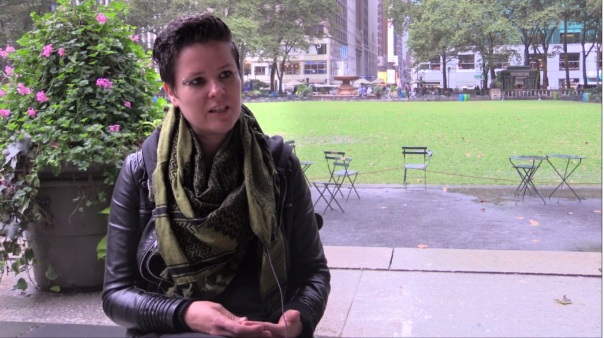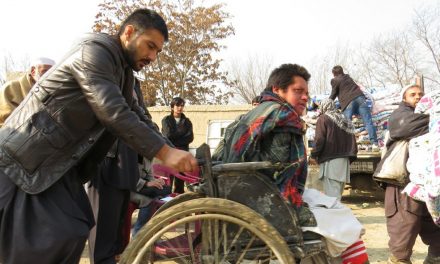Written by Tony Robinson / Beyond Nuclear International
How states stood up to the nuclear bullies and won a ban treaty
At 7pm, on the 6thof June, at the Village East Cinema, in Lower Manhattan, Pressenza International Press Agency, of which I am a co-director, will host the World Premiere of our new documentary on the Treaty to Prohibit Nuclear Weapons. The title, The Beginning of the End of Nuclear Weapons, is a reference to the speech made by Setsuko Thurlow to the assembled throng of dignitaries and International Campaign to Abolish Nuclear weapons (ICAN) campaigners, during her Nobel Laureate Speech in December 2017 when the Peace Prize was awarded to ICAN.
The film charts the story of the development of the atomic bomb through to the negotiations to prohibit nuclear weapons, and is told through the interventions of 14 people whose roles have been key in the fields of activism and diplomacy.
The full horror of the US bombing of Hiroshima is explained in the words of Setsuko herself as she recounts the day the bomb was dropped on her hometown, the subsequent impacts on the Hibakusha, as the survivors are known, and the efforts by the government to censor all information on the subject.

Ray Acheson, of Women’s International League for Peace and Freedom, interviewed in the film.
A brief history of anti-nuclear activism is set out with the help of veteran campaigner, Alice Slater from the Nuclear Age Peace Foundation, together with the great strides taken in the 1980s to eliminate entire classes of weapons and bring down international tensions without actually doing anything to abolish nuclear weapons entirely.
A spotlight is placed on the Nuclear Non-Proliferation Treaty and how the situation of stagnation within that forum led to the chance to open up a new path through the so-called “humanitarian initiative” which resulted in the Ban Treaty.
Insights from Kathleen Lawand from the International Committee of the Red Cross, Beatrice Fihn and Tim Wright from ICAN, Ray Acheson from the Women’s International League for Peace and Freedom, Ira Helfand and Carlos Umaña from the International Physicians for the Prevention of Nuclear War, all illustrate how the Humanitarian Initiative dismantled the arguments of the nuclear weapon states and effectively changed the narrative from “tools of security and stability” to “human beings are destroyed by nuclear weapons.”
Ward Wilson, author of Five Myths about Nuclear Weapons, dismantles arguments used to support the theory of nuclear deterrence. And Elayne Whyte Gomez, the Costa Rican President of the negotiating conference, brings an insight to the way the negotiations were held and the spirit of ethics given to the conference from the inclusion of academia, civil society and survivors.
Now that the Ban Treaty is a reality and is on its way to entry into force, the task falls to campaigners to really put pressure on their governments so that they ratify the treaty. Daniel Högsta from ICAN, Pedro Arrojo, a Spanish parliamentarian, Susi Snyder from the Don’t Bank on the Bomb campaign, and Rafael de la Rubia from World without Wars and Violence, give us a flavor of some of the things that anyone can do to effectively stigmatize nuclear weapons and bring them up to the same level of taboo as chemical and biological weapons, which are already illegal.

Spanish parliamentarian, Pedro Arrojo.
The documentary of 55 minutes duration is a collaboration between Spaniard, Álvaro Orus, and me, a Briton and co-director of Pressenza. Orus has been making films on subjects related to peace and nonviolence for nearly two decades, and I got involved with anti-nuclear activism in 2006 and have been closely involved ever since, attending various conferences, including the humanitarian consequences conferences of 2013/14. For two years I have been a member of the Abolition 2000 Coordinating Committee. In 2009 Orus and I took part in a global activity to promote nuclear disarmament in the 1stWorld March for Peace and Nonviolence whose first demand was the elimination of nuclear weapons.
The film came about when in May 2018 I attended the NPT Prepcom in Geneva. I was planning to go and visit the ICAN offices and see the Nobel Peace Prize. That morning I had the idea that a movie needed to be made about the Ban Treaty. I knew that Álvaro had just finished a film on the subject of Universal Basic Income so I wondered if I could tempt him to make another film, with me. When I called him, he said to me, “Oh! I was just about to call you to see if we could make a movie together’!” ICAN gave their blessing to the idea and said they would collaborate, and the rest is history.
Over the next six months we organized interviews in Madrid, New York, Toronto, Utrecht and Geneva to record all the testimony, after which we spent time cutting and polishing the script and inserting the most relevant elements to deliver a film that doesn’t shy away from showing harrowing images, but at the same time places the subject of nuclear weapons in a moment of decline, and leaves the viewer feeling very hopeful and inspired to get involved. (Watch the official trailer, below).
Reaction to the film has already been positive just from the trailer. The film, which has been produced in English and Spanish, is currently in the process of translation into Japanese, French, Italian, Greek and Czech. Friends from CND Cymru are even talking about a possible Welsh language version!
We’ve made this documentary because it’s a story that has to be told, and at Pressenza we felt we were possibly the best placed media organization to tell it, having followed it from the moment the words “catastrophic humanitarian consequences” were inserted into the 2010 NPT consensus document.
I, like many people, was sceptical of the effectiveness of a Ban Treaty when it was first proposed, but after the 2013 Oslo conference all my doubts went away. Pressenza became an ICAN partner and we’ve given as much coverage as we can to the initiative ever since. Not only has it brought hundreds of young activists into the field, it has also empowered non-nuclear-weapon states to do something that they could never have imagined before 2010.

Ours is an agency that specializes in journalism for peace and nonviolence, and the Ban Treaty is a perfect story for us. The world is full of bullies in society, from the classroom to the work place, and what we have with the Ban Treaty is a story of organized states standing up to the nuclear bullies in a nonviolent way. How can we ever think to eliminate bullies from the playground, if they are running amok in international fora such as the UN and threatening the world with collective suicide? The Ban Treaty is a process that is a turning point in international relations because it takes on the bullies and shows them for what they are, and we wanted to tell the story from this point of view.
Beatrice Fihn really does sum it up best in the film when she says, “The ability to kill massive amounts of people and inflict suffering and pain on civilians is not a sign of power and prestige. It’s what dictators do, it’s what human rights violators do, not respectable countries that want to have a good standing in the international community. And now it’s their turn to be on the outside.”
The film will be eventually available to the general public on YouTube, but for now any activists who want to organize a presentation of the film can do so by contacting the author and Pressenza co-director, Tony Robinson at tony.robinson@pressenza.com.
All images courtesy of Pressenza.














